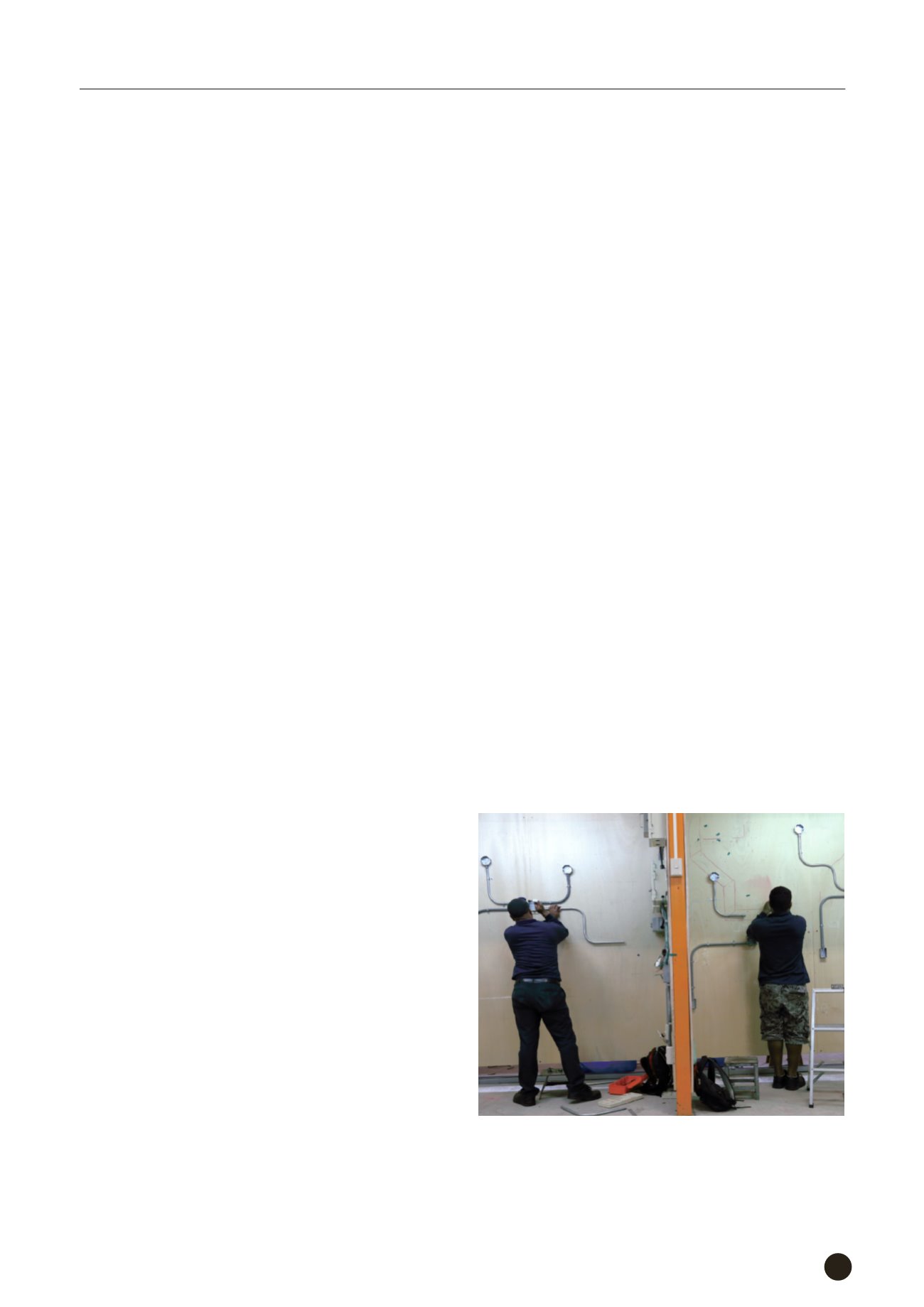

All international cooperation projects implemented by
the International Cooperation and Development Fund
(TaiwanICDF) are planned according to the organization’s
vision, mission and strategy. To respond to this rapidly
changing world, the TaiwanICDF constantly strives for
innovation and change, and actively searches for more
effective ways of implementing our projects.
In 2015, the TaiwanICDF effected major changes in
various aspects of project execution. Overall, projects
now cover each sector in greater depth, integrate both
public and private resources, and focus on solving the
core problems. The following describes the areas and the
respective changes we have carried out:
1. Agriculture:
Efforts include promoting and increasing
agricultural production, establishing healthy and robust
local seedling production systems, as well as providing
agriculture financial services. The TaiwanICDF does
not merely focus on agricultural productivity, but also
aims to help our partners establish comprehensive and
healthy seedling production systems, thereby fostering
sustainable agricultural development.
2. Public Health and Medicine:
For our healthcare
service projects, we seek out professional resources
and establish platforms to integrate the investment of
medical resources from public and private sectors,
working together to plan our public health and medical
projects. We customize our training programs to
cultivate local talent, and arrange and adjust the content
according to the aspects of project implementation.
3. Information and Communication Technology (ICT):
By improving ICT utilization competences and employing
ICT systems, we have strengthened government
management efficiency. Through capacity building,
we have trained ICT professionals and helped to set
up ICT support systems. As well, we have assisted our
partners in the use of system-based ICT operations to
establish e-governments, and used Information Security
Management Systems (ISMS) in line with International
Organization for Standardization (ISO) standards so that
our partner countries’ government information systems
are aligned with global standards, effectively improving
their administrative efficiency.
4. Education:
From elite-centered capacity building to
universal education through technical and vocational
training. In the past, human resource training programs
focused on “capacity building for elite” that targeted
government officials, professionals or researchers. This
approach has now transitioned and changed, with
courses designed based on the “Education for All”
initiative to implement this global movement led by the UN.
5. Lending and Investment:
From traditional lending
mechanisms to the new inclusive model that takes
into account the needs of different target groups.
The TaiwanICDF has partnered with diverse financial
institutions to provide financial and loan services that
meet current social, national and demographic trends,
and the actual needs of the population.
6. Cross-cutting Operations:
From conducting regular
operations to coordinating with ongoing TaiwanICDF
projects to increase project effectiveness. Taking the
TaiwanICDF Overseas Volunteers Program as an
example, the standard practice was to recruit and
dispatch suitable volunteers according to the needs of
our partner countries. New measures include internal
review and selection of projects for overseas volunteers
by the TaiwanICDF, and then identifying volunteers
with matching competences who are then directly
dispatched to offer their services.
Innovation and change as the drivers of project implementation
One of the TaiwanICDF’s educational reforms is transforming from an
“elite-type framework” to “Education for All,” an initiative advocated by the
United Nations. (Photo shows youths working on electric and plumbing
as part of the Taichung-Changhua-Nantou Regional Branch Vocational
Training Project for Youth in the Pacific. )
Special Reports
41


















